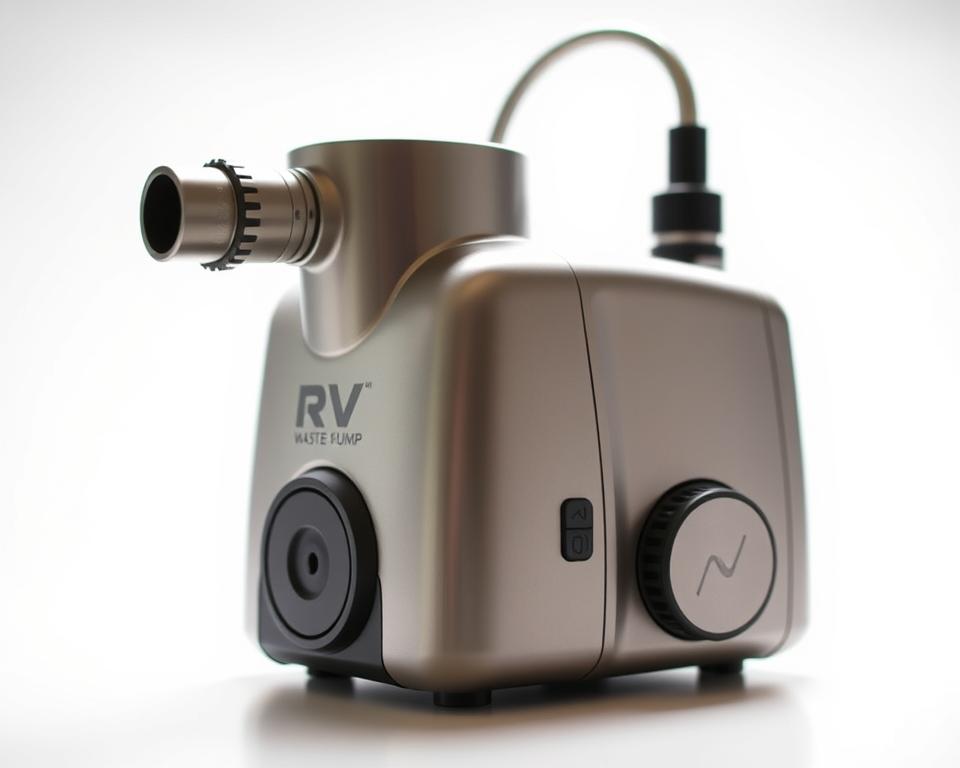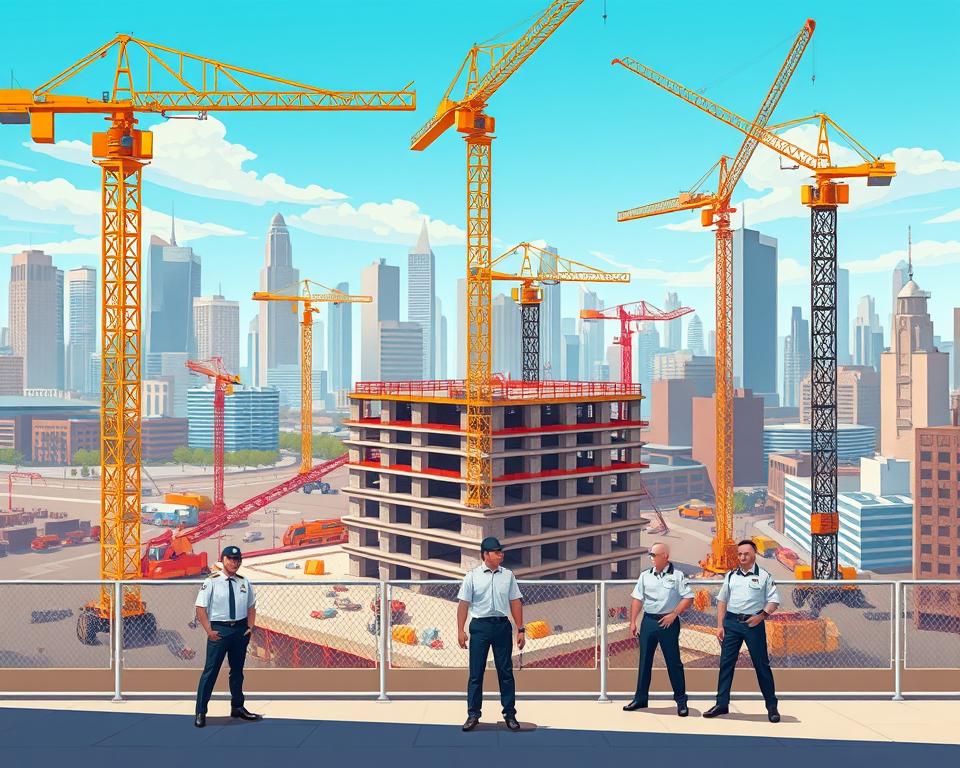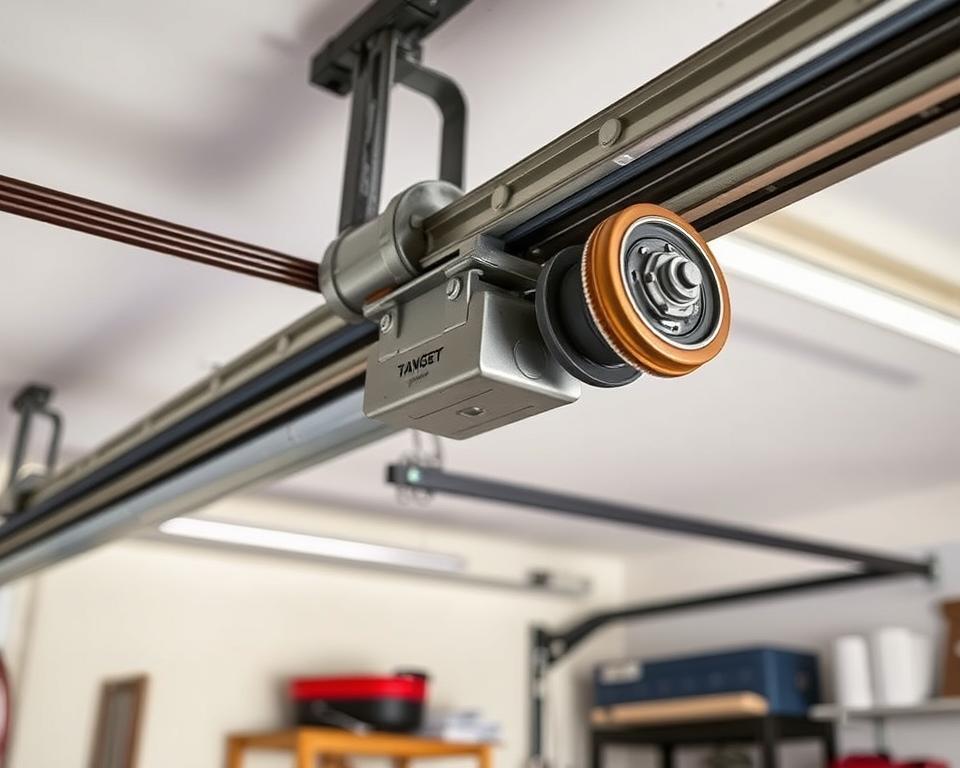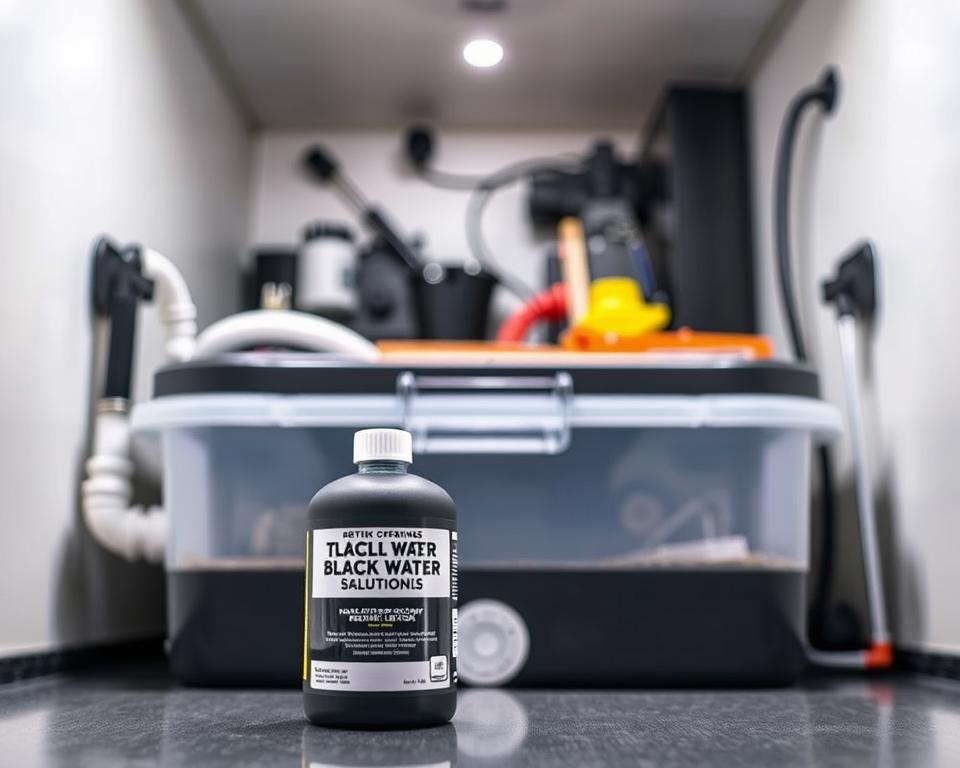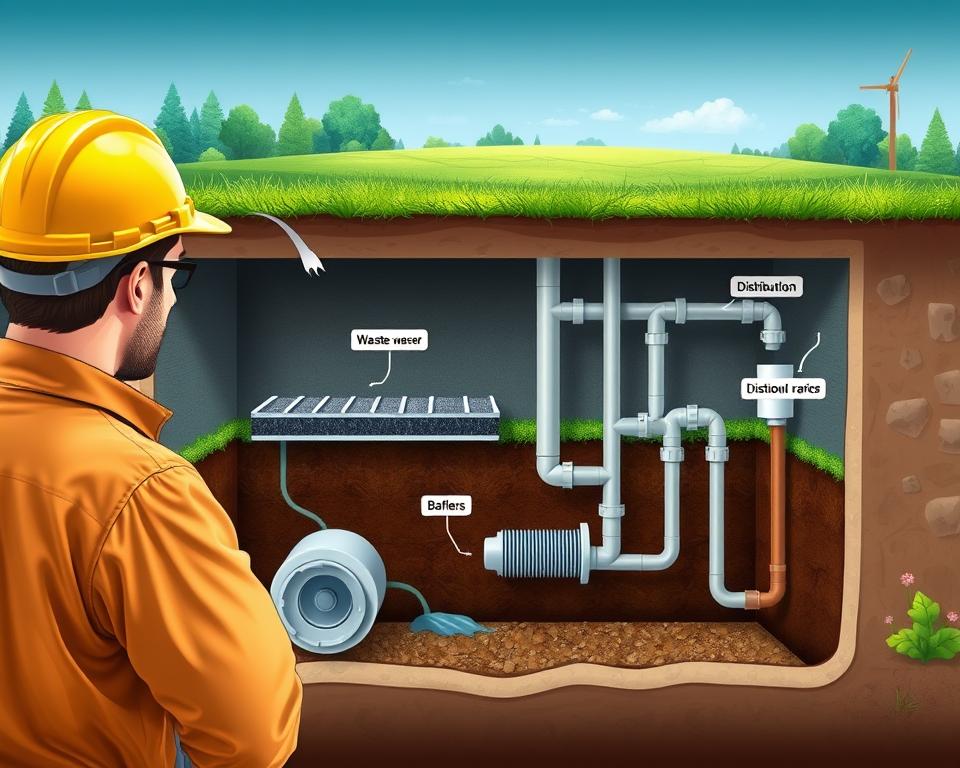Septic Pumping Service: Specialized Maintenance Solutions
Have you ever thought what lies under your property? Ignoring your septic system impacts more than just your property; it harms the environment too. Many don’t recognize how essential septic pumping services are. These services are critical to smooth operation for homes and businesses alike. At All in Sanitation, we offer top-quality septic tank cleaning and upkeep, improving your system’s health and lifespan. Acknowledging the role of dependable septic services is vital for safeguarding public health and protecting the environment. Keep reading to understand the necessity of regular maintenance.
Significant Points
- Understanding the value of septic pumping service can prevent costly repairs.
- Routine septic tank cleaning improves the lifespan of your system.
- Skilled septic services ensure adherence with local regulations.
- Identifying signs of septic issues early can avert health risks.
- Choosing reliable septic services supports both your home and the environment.
Understanding Septic Systems
Septic systems are essential for wastewater management, especially in less urbanized areas – septic inspection cost. They process and manage household waste efficiently. In each system, the septic tank plays a central role. Solids collect at the bottom, and liquids move to the drain field.
Servicing your septic system regularly is vital for its longevity. It’s smart to schedule inspections every three to five years. These check-ups can catch early signs of problems, like blockages or leaks. Understanding the different types of septic systems helps homeowners manage them properly.
The bacteria in the septic tank are essential. They break down waste into safe byproducts. Similarly, the drain field’s design matters as it filters treated water before it returns to nature. This underlines the environmental value of septic systems.
A properly maintained septic system safeguards household health and promotes environmental well-being. Through diligent inspection and upkeep, homeowners can keep their systems in excellent condition. This benefits their households and the planet alike.
Value of Regular Septic Maintenance
Maintaining your septic system consistently is crucial for every homeowner. Without proper care, the system may fail, leading to costly fixes and potential health risks from overflows. A septic system in good condition guarantees its efficient function and wards off issues related to untreated sewage.
Choosing reliable septic services like All in Sanitation is vital to a septic system’s longevity. Through consistent inspections and pumping, such services ensure your system works well. This helps homeowners avoid the costs that come with major repairs. Regular maintenance protects your property and ensures you meet local guidelines.
For best septic system care, homeowners are advised to adopt a regular maintenance schedule. Being proactive benefits the system’s performance and contributes to a cleaner environment. It also reduces the risk of damage to your property and the community’s health.
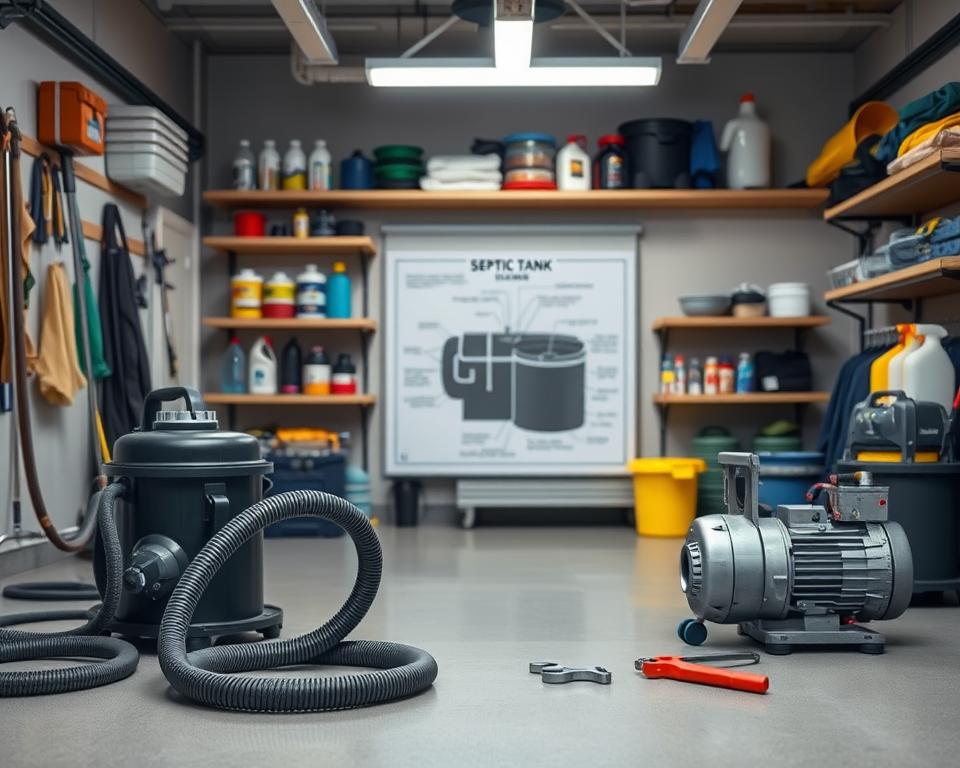
Septic Pumping Service
Septic pumping service is key for maintaining your system’s longevity and efficiency. It prevents system failures and averts expensive repairs. Professionals suggest scheduling this every 3 to 5 years. Yet, the interval may depend on how many people live in your home, how you use the system, and your tank’s size.
Professionals employ high-tech methods to clean out your septic tank during a service. They use potent pumps to extract solids, sludge, and wastewater. This ensures your system runs efficiently. All in Sanitation offers expert services, guaranteeing dependable outcomes.
Some situations call for urgent septic pumping, like slow drainage, sewage backup, or bad smells around the drain field. Spotting these signs early helps you avoid bigger problems. Staying ahead with maintenance means your septic system will operate seamlessly. This brings you a sense of peace of mind.
Signs Your Septic Tank Needs Pumping
Noticing when your septic tank is full is key to keeping your home’s plumbing in top shape. Homeowners must watch for several signs that it’s time to check the septic tank.
- Slow Drains: Ongoing sluggishness in home drains can mean there’s a septic tank issue.
- Unpleasant Odors: Bad smells around your house could suggest a backup, often from a full tank.
- Pooling Water: Standing water near your yard or drain field signals that your septic tank might need attention.
Taking swift action is critical when you spot these signs. Arranging for urgent septic service promptly can halt further damage and save money on repairs. All in Sanitation provides fast, professional solutions when you’re in urgent need.
The Septic Tank Cleaning Process
The septic tank cleaning process starts by evaluating the system’s current state. Technicians carry out an inspection to pinpoint any potential problems. They use this information to avoid complications during cleaning. Then, experts deploy state-of-the-art equipment to remove waste and sludge from the tank.
After emptying the tank, a skilled team meticulously cleans its interior. They ensure no harmful bacteria or debris compromises the system’s efficiency. Techniques like high-pressure water jets and specialized tools are vital for thorough cleaning.
The cleaning concludes with a comprehensive check to verify the system operates correctly. Experts inspect the tank and the drain field, performing repairs if necessary. This complete procedure not only prolongs your septic system’s life but also highlights the value of regular maintenance for homeowners.
The Role of a Qualified Septic Services Company
Opting for a trusted professional septic service impacts your system’s upkeep and durability significantly. Specialists bring deep insights and expertise, ensuring thorough checks, maintenance, and necessary repairs of your system.
Understanding local rules and meeting compliance standards is something a professional septic services company excels at. This knowledge is pivotal, helping homeowners steer clear of legal problems. It ensures the septic system functions smoothly within set regulations.
Case studies highlight the value experts add to septic maintenance. Through timely expert interventions, small issues are stopped from becoming bigger, expensive repairs. When sudden issues strike, emergency septic services offer quick help, averting potential crises for homeowners.
To sum it up, working with a professional septic services company boosts system efficiency and extends its life, preventing issues. Homeowners gain confidence, knowing their system is under expert care.
Emergency Septic Services
An unexpected septic issue can cause serious stress for homeowners. Situations such as pump failures or untreated sewage leaks need immediate action. Not addressing these can result in significant damage and health hazards. Emergency septic services offer prompt aid to safeguard your property and health.
Experts in local septic pumping respond swiftly to emergencies. They arrive ready to tackle various septic problems effectively. These trained specialists evaluate the situation, suggest solutions, and carry out repairs promptly. Thanks to their rapid response, you can stay calm during an emergency.
It’s crucial for homeowners to know about potential septic emergencies, like:
- Blocked toilets or drains
- Backups creating hazardous conditions
- Odors that signal leaks
Being prepared makes septic emergencies easier to handle. Knowing your options for emergency septic services saves valuable time and lessens stress. Always put your home and family’s safety first by getting professional help immediately.
Local Regulations and Compliance
Grasping local rules on septic systems is vital for owners. Each area demands its own maintenance and inspection rules for septic tanks. Knowing these regulations ensures you follow the law and safeguard the environment.
Regular checks are key to meeting these standards. Homeowners must show proof of upkeep, like service records from local septic companies. This proves compliance and can extend the system’s life.
Local authorities often set maintenance schedules for septic systems. Ignoring these can lead to large fines or environmental harm. Using local services that know these rules helps keep your system in check and avoids future problems.
Common Septic Tank Issues
Septic tanks face various challenges that hinder their function. Issues like clogs, leaks, and bad smells can trouble homeowners. It’s vital to recognize these problems for proper care of your septic system.
Clogs typically occur due to excessive solids overpowering the tank’s capacity. This can cause plumbing backups, underlining the importance of timely cleanings. Homeowners should watch for slow drains and gurgling noises, signaling a potential clog.
Leaks present serious environmental risks by possibly contaminating groundwater. Early detection through regular inspections can curb these dangers. It ensures adherence to environmental guidelines, safeguarding local water sources.
Bad odors from the yard often pinpoint a malfunctioning septic system. These smells suggest issues with the tank or drainage fields. Consistent upkeep is crucial for troubleshooting and rectifying these odor sources.
By taking preemptive steps like scheduling inspections and following cleaning guidelines, homeowners protect their investment. Numerous homeowners attest to the value of diligent septic maintenance. It proves the importance of being proactive in septic system care.
Best Practices for Homeowners
For homeowners, maintaining a functional septic system is crucial. Adhering to recommended maintenance practices improves durability and reduces complications. Initiating this process with a routine septic tank inspection is key. Aim for evaluations every three years, though yearly assessments grant additional security.
The daily actions of homeowners influence the septic system’s well-being. Refrain from disposing of non-biodegradable materials, such as wipes or feminine hygiene products, in toilets. These items may block your system and impede its operation. Limiting exposure of your septic system to harsh chemicals, including bleach and prescription drugs, is imperative. Such substances jeopardize the crucial bacteria responsible for decomposing waste within the tank.
How much water you use directly affects the lifespan of your septic system. Consider adopting water-efficient appliances and fixtures to ease your septic tank’s burden. Spacing out water consumption throughout the day can also prevent system overload. Making these minor changes can markedly improve your septic system’s condition.
Choosing the Right Septic Tank Pumping Company
Finding the right septic tank pumping company can be challenging for homeowners. They should evaluate several key factors to ensure they choose a service that’s reliable and high quality. Start by looking into the company’s experience. An established company is often reputable and known for reliable septic services.
Certifications are crucial too. Make sure the company complies with local rules and has the required certifications. Their proficiency showcases their professionalism and deep understanding of septic systems. Customer reviews are also insightful. They reveal a lot about service quality, timeliness, pricing, and staff professionalism.
Consider the variety of services a company offers. Choosing a company that provides both regular upkeep and emergency services is wise for unforeseen issues. All in Sanitation is notable, offering comprehensive septic solutions to the community.
| Criteria | Significance | Sample Metrics |
|---|---|---|
| Experience | Shows track record | Decade of service |
| Certifications | Ensures compliance with local regulations | Licensed and insured |
| Customer Reviews | Indicates satisfaction | 4.8-star average on major platforms |
| Scope of Services | Offers flexibility for various needs | Full service menu |
By prioritizing these factors, homeowners can confidently select a septic tank pumping company. This ensures they maintain an efficient and well-functioning septic system.
The Bottom Line
In our journey through the world of septic systems, we’ve underscored the crucial importance of both routine maintenance and professional services. These elements are key to prolonging a system’s life and optimizing its performance. Timely septic pumping not only avoids expensive fixes but also safeguards your property and health. Grasping the signals that your septic tank sends and adhering to maintenance best practices affords you peace of mind in the performance of your setup.
Choosing to work with a esteemed company such as All in Sanitation guarantees top-tier septic pumping service that meets your specific needs. Their expertise ensures that inspections and maintenance are conducted efficiently, preventing possible challenges that could escalate. Investing in professional septic services now can notably decrease future expenses on repairs and replacements.
As a final word, we urge every homeowner to take an proactive stance in caring for their septic system. Conducting regular checks, addressing issues promptly, and employing skilled professionals are fundamental steps. These efforts not only extend the life of your septic system but also contribute to a healthier living environment. Taking action today secures your home against potential complications, assuring a safe space for the future.

